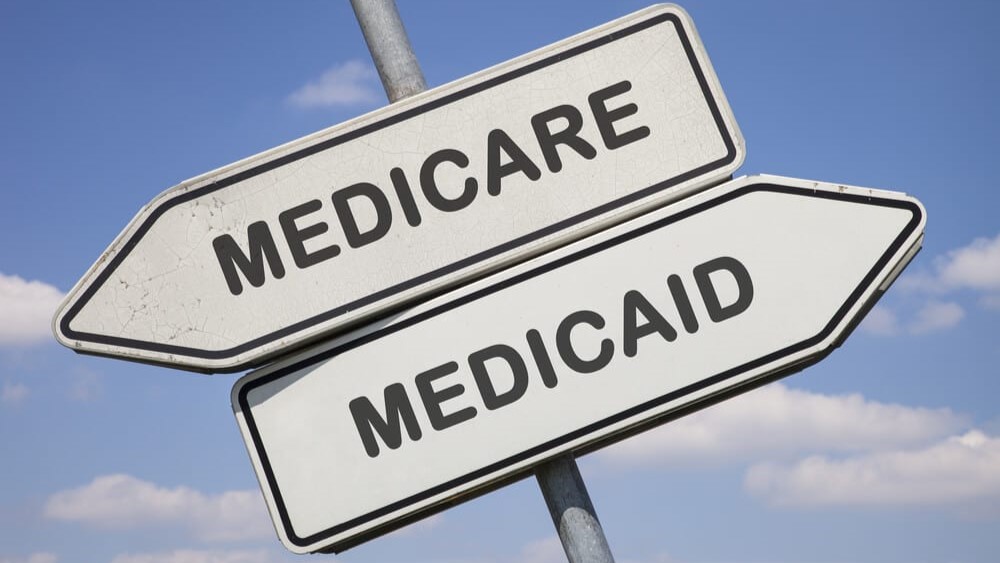There are many government programs designed for individuals with limited income or resources. However, over 30% of Medicare members eligible for savings are not enrolled in a program.
Medicare is not free. Beneficiaries are expected to pay for costs related to Medicare, such as deductibles and 20% of all outpatient expenses.
Not signing up for Medicare could mean missing out on significant cost savings. You may also be impacting your health by reducing required doctor visits or skipping prescription drug medications.
Here are the three (3) Medicare-related programs for those with limited income and resources that you should check to see if you’re eligible.
Medicaid
Medicaid provides health coverage to millions of Americans, including eligible low-income adults, children, pregnant women, elderly adults, and people with disabilities:
- It is a state-based program that is funded jointly by states and the federal government.
- Eligibility requirements are broadly based on income, age, disability, pregnancy, household size, and the applicant’s household role.
The Centers for Medicare & Medicaid Services (CMS) advises individuals to complete a Medicaid application even if they’re not sure they qualify. To find out if you are eligible, you can apply through your state’s Medicaid website or HealthCare.gov.
If you are eligible for Medicaid, depending on your level, you can get up to 100% subsidies for Medicare Part A and B premiums, deductibles, and out-of-pocket costs as well as subsidies for Part D prescription drug coverage.
| Tip: Medicaid EligibilityAs a good rule of thumb: – If you are an adult with no dependents and make less than 133% of the Federal Poverty Line (FPL), there may be a program for you, depending on whether your state expanded Medicaid under Obamacare. – If you are pregnant, elderly, disabled, or a parent/caretaker, or a child and make less than 100% to 200% of the FPL – there’s likely a program for you – If you are receiving Supplemental Security Income (SSI), you are automatically qualified for Medicaid. |
Medicare Savings Programs
Not eligible for Medicaid in your state? – there’s good news! The Medicare Savings Program (MSP) is a Medicaid-administered program where your state will help pay your Medicare Part A (hospital insurance) and Medicare Part B (medical insurance) premiums if you are under Original Medicare.
You do not need to have Medicaid to apply for MSPs and/or be Medicaid-eligible to qualify for an MSP.
Depending on how your income and assets compare against the Federal Poverty Line (FPL) threshold, you may qualify under one of these three MSP programs. MSP programs pay for Part A and Part B premiums and Part B out-of-pocket costs. Here is a summary breakdown of their benefits:
| Medicare Savings Programs (MSP) | Your Income (% of FPL) | Pays for Part A Premiums | Pays for Part B Premiums | Pays for Part B Out-of-Pocket |
|---|---|---|---|---|
| Qualified Medicare Beneficiary (QMB) | ≤ 100% of FPL | Yes | Yes | Yes |
| Specified Low-Income Medicare Beneficiary (SLMB) | ≤ 120% of FPL | No | Yes | No |
| Qualifying Income (QI)Note: If you are receiving Medicaid benefits, you will not be qualified for QI | ≤ 135% of FPL | No | Yes | No |
Medicare Extra Help (Part D Low-Income Subsidy)
Medicare Extra Help, also known as Part D Low Income Subsidy (LIS), assists Medicare beneficiaries with low income and resources to pay for their prescription drugs. According to the SSA, Medicare Extra Help’s beneficiaries receive an estimated annual savings of $5,000.
Extra Help helps pay for prescription drug expenses, including premiums, deductibles, copayments, and co-insurance. Members can receive full or partial subsidies.
| Tip: ‘Extra Help’ Eligibility You are automatically eligible for LIS if you meet any of these conditions: – You are dual-eligible, meaning you are eligible for both Medicare and Medicaid – You have both Medicare and Supplemental Security Income (SSI) – You are currently receiving benefits under one of the MSPs above |
Fortunately, if you are not automatically qualified based on one of the criteria above, you may still get Medicare Extra Help. That is if your income, including the salary of a living-in spouse, is less than 150% of the Federal Poverty Level (FPL).
Bottom Line: Always check your eligibility for savings programs
If you have limited resources and assets, always apply for the various support programs available to you. Over 30% of Medicare members eligible for Medicaid and Medicare Savings Program (MSP) are not enrolled – don’t be one of them! Lastly, annual income and resource requirements can change yearly, so you will typically be assessed for eligibility annually.
Related Posts
Do you need Medicare if you have other health insurance?
Medicare Advantage Mistakes: Cancelling Part B or Enrolling in a Separate Drug Plan
The Biggest Medicare Mistake: Missing Your Medicare Supplement Open Enrollment Period
Don’t be a statistic. Do you understand your Medicare coverage?


